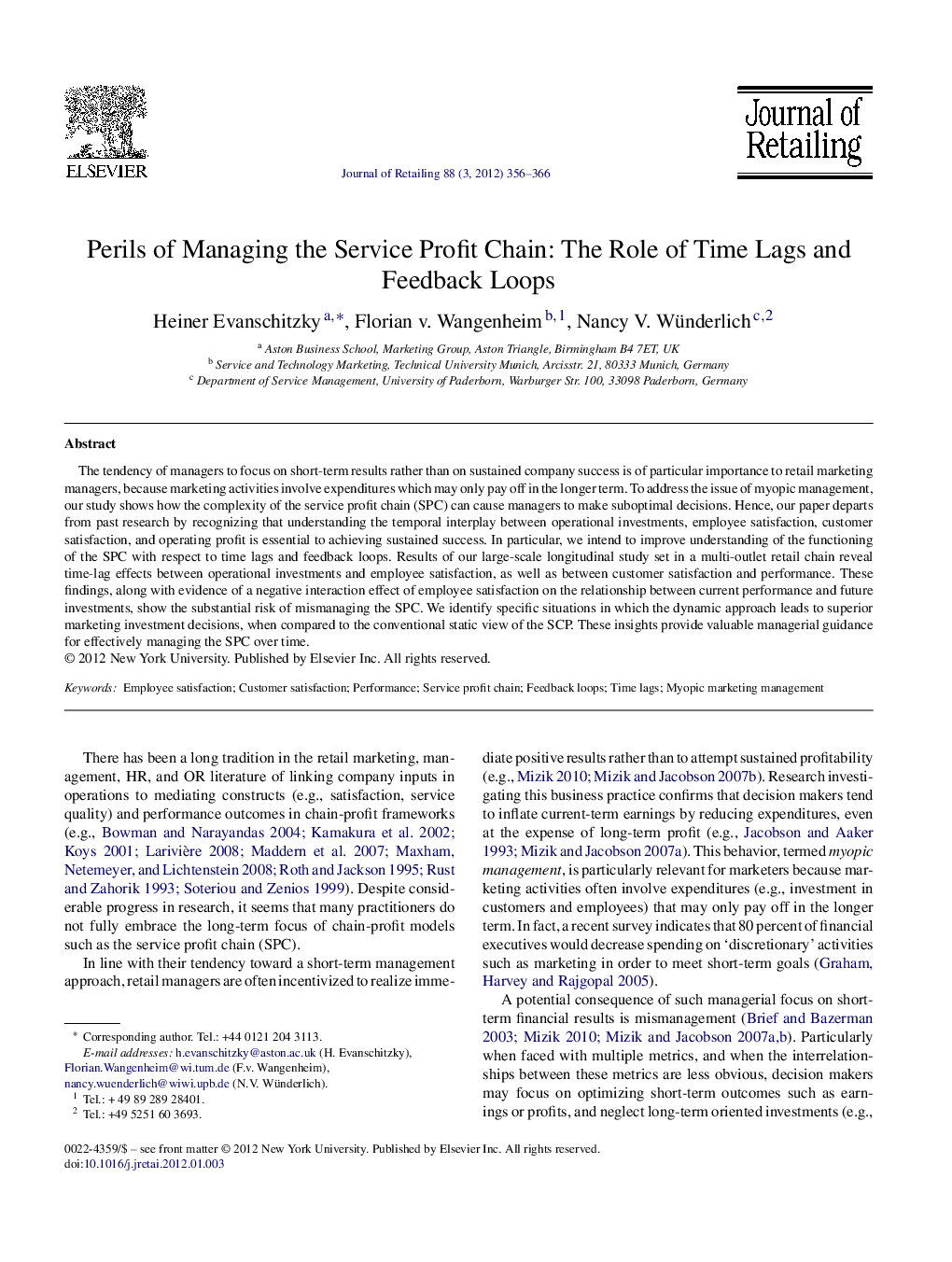| کد مقاله | کد نشریه | سال انتشار | مقاله انگلیسی | نسخه تمام متن |
|---|---|---|---|---|
| 886360 | 913053 | 2012 | 11 صفحه PDF | دانلود رایگان |

The tendency of managers to focus on short-term results rather than on sustained company success is of particular importance to retail marketing managers, because marketing activities involve expenditures which may only pay off in the longer term. To address the issue of myopic management, our study shows how the complexity of the service profit chain (SPC) can cause managers to make suboptimal decisions. Hence, our paper departs from past research by recognizing that understanding the temporal interplay between operational investments, employee satisfaction, customer satisfaction, and operating profit is essential to achieving sustained success. In particular, we intend to improve understanding of the functioning of the SPC with respect to time lags and feedback loops. Results of our large-scale longitudinal study set in a multi-outlet retail chain reveal time-lag effects between operational investments and employee satisfaction, as well as between customer satisfaction and performance. These findings, along with evidence of a negative interaction effect of employee satisfaction on the relationship between current performance and future investments, show the substantial risk of mismanaging the SPC. We identify specific situations in which the dynamic approach leads to superior marketing investment decisions, when compared to the conventional static view of the SCP. These insights provide valuable managerial guidance for effectively managing the SPC over time.
Figure optionsDownload as PowerPoint slideHighlights
► This study addresses the issue of myopic management in the service profit chain.
► We model longitudinal data from customers and employees as well as objective operational input and profit outcomes.
► Results reveal time-lag effects between operational investments and employee satisfaction as well as between customer satisfaction and performance.
► A negative interaction effect of employee satisfaction on the relationship between performance and future investments reveals the risk of mismanagement.
► We conclude that reporting systems need to take time-lags and feedback loops into consideration.
Journal: Journal of Retailing - Volume 88, Issue 3, September 2012, Pages 356–366